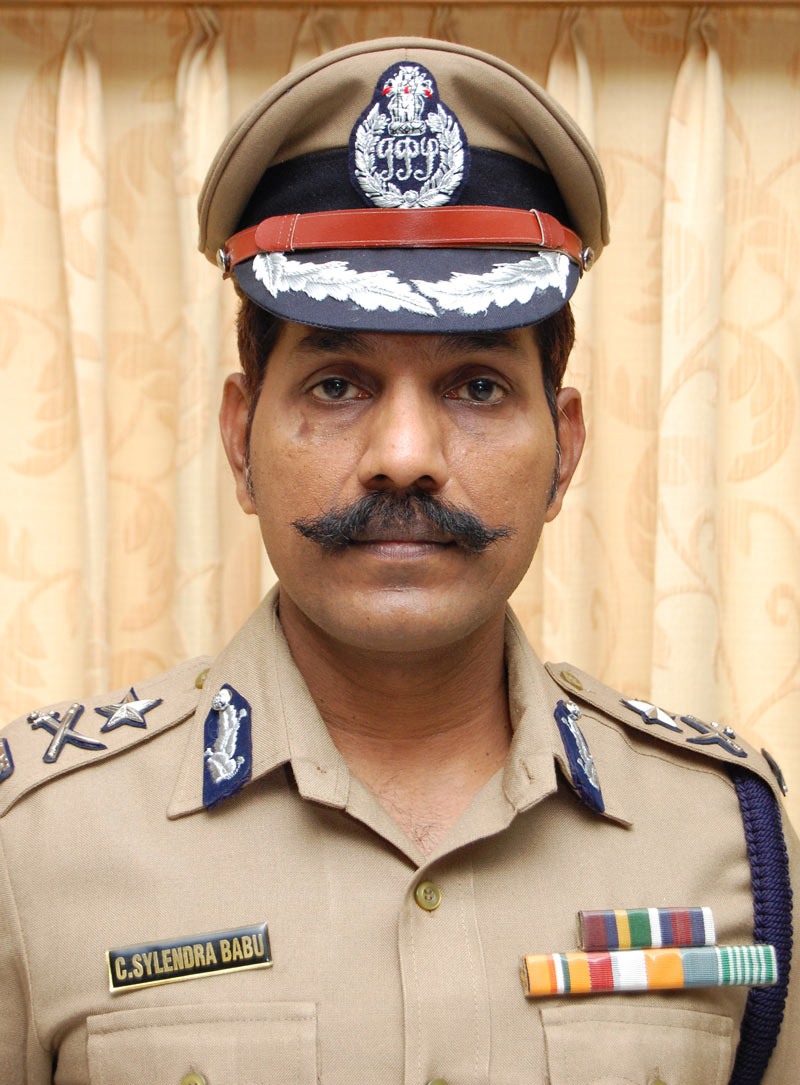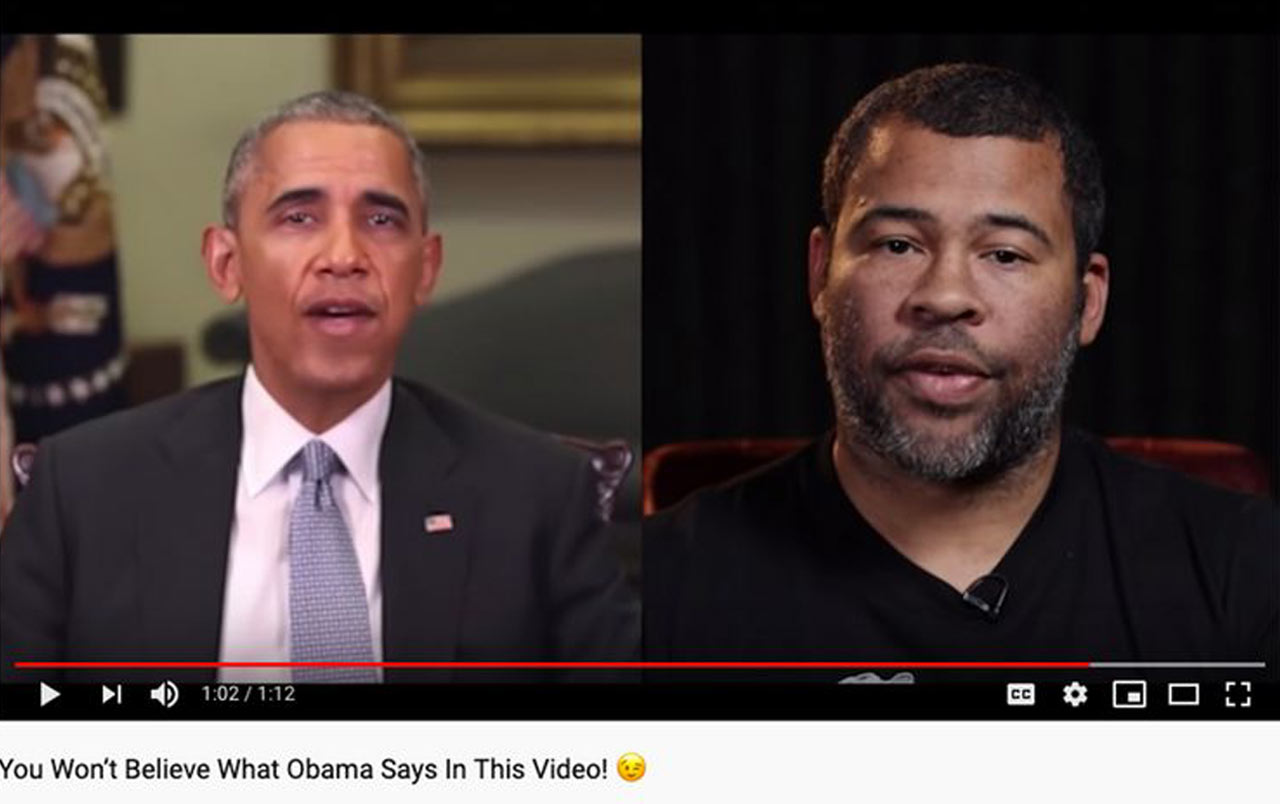The pictures do not lie, but neither do they tell the whole story,” wrote Paul Auster in the novel, Travels in the Scriptorium. Though in a different context, this showed up as true recently in what could have been a sinister plot against the integrity of India. Some social media posts went viral with video content implying attacks taking place on Hindi-speaking migrant labour in Tamil Nadu. Subsequent investigations by official agencies and independent fact-checkers found most of the videos to be intentionally manipulative or posted with the wrong context.
These dangerously misleading viral videos shared widely on social media triggered an exodus of migrant workers from Tamil Nadu between late February and early March. Most of the social media posts were later proven to be fake. But by then the damage was done. A livid Bihar legislature condemned the Tamil Nadu government, and the chief minister sent a fact-finding team to the southern state even as the latter tried to defend itself. However, timely action by the authorities helped prevent the situation from escalating.
Fact-checking website Alt News investigated five such posts that had attracted wide attention and found them to be unrelated. Incidents involving other issues and happenings elsewhere were being passed off as hate crimes against the Hindi-speaking migrant workers. According to another fact-checker, Boom Live, the ‘news’ of a resident of Bihar’s Jamui, Pawan Yadav’s murder on February 19 spurred the fake videos. Yadav, who worked as a tailor in Tamil Nadu, was murdered due to a personal dispute, the police said. However, newspapers and websites in Bihar portrayed it as a hate crime against migrants, Boom Live stated.
Alt News was founded in 2017 by Pratik Sinha and Mohammed Zubair in Ahmedabad. Neither was available for comment on the fake videos despite several attempts to reach them. It has offices in Ahmedabad and Kolkata. Zubair is facing legal charges on earlier issues and the matter is in court. A television news channel even connected him to billionaire George Soros, who has been critical of the government’s attempts to clamp down on India’s democratic traditions and institutions. But the same television channels, which also played up the misleading videos, did minimal programming when they were exposed as fake.
Dr C Sylendra Babu, DGP, Tamil Nadu Police, made a series of video appeals in Hindi to calm the fears of migrant workers after multiple misleading, and some outright fake, videos went viral on social media
Boom Live caught up with 20-year-old Bikku Paswan in his hometown in Bihar after he returned hastily from his job in a saree-cutting factory in Tiruppur, Tamil Nadu. He told the website that he had never faced any discrimination or threat there, but the murder of fellow villager Pawan Yadav, followed by a flurry of videos that were forwarded to him on WhatsApp groups, had left him so panic-stricken that he took the first train available out of Tamil Nadu. There are several such stories of panic-stricken workers who fled home, many of them not even waiting to book tickets and ending up paying extra as fines.

On March 9, the Tamil Nadu police said that it had arrested the alleged murderer of Yadav, Upendra Dhari, from Dhanbad in Jharkhand. Dhari was said to have been working in Tiruppur for the past two decades. The Tamil Nadu police said that he allegedly murdered Yadav over “personal enmity”.
Another “highly graphic video”, according to Boom Live, that went viral showed a young man lying in a pool of blood with an abdominal injury. The video claimed he was a Bihari migrant who was attacked in Tamil Nadu. The website found the claim false and that the video was of an incident that took place in Karnataka’s Bengaluru Rural district in February. Two local students had been stabbed during a brawl with other locals.
Ironically, while the furore over the fake posts was on, a video started doing the rounds showing passengers clinging to the doors and windows of a packed train. Purportedly depicting fleeing migrants, it was captioned “Tamil Nadu to Bihar”, implying that it showed Bihari laborer’s rushing home. The Hindu reported on March 9 that it had found the post to be misleading, as the train was not travelling from Tamil Nadu to Bihar. It was the
Palamu Express “which plies between Barkakana Junction in Jharkhand and Patna Junction in Bihar,” the report clarified.

Reports also claimed that the Chennai police booked Tamil Nadu BJP chief K. Annamalai for “inciting violence and promoting enmity between two groups” after he linked the ruling DMK to the spread of rumors about migrant workers. The BJP leader, however, called the case against him false. The police also registered cases against two journalists of a Hindi online daily, OpIndia—that has been caught several times posting and propagating fake news—and Bihar BJP spokesperson and Supreme Court lawyer Prashant Patel Umrao, among others, for spreading rumors.
It is clear from the Tamil Nadu incident that provocative and inflammatory posts and misleading viral videos kindled the fire of regionalism that turned into a political battle. An editorial in The Times of India addressed the issue of social media fakes earlier in March. “How to handle the disruptive and dangerous impact of fake news on social media?” it asked. The newspaper said “…the state machinery wasted no time. The CM, ministers, police, and the governor along with industry mounted a swift and decisive response to quell the rumors and assure Hindi-speaking migrants of their safety in TN, through direct meetings with migrants and also on social media”.
This incident also underlined yet again how this ‘age of information’ is under siege from disinformation and misinformation, especially at a time when ‘facts’ are made up or distorted to suit certain aims and objectives. According to an MIT study, fake news has a propensity to be tweeted 70% more than real news and “it takes true stories about six times as long to reach 1,500 people as it does for false stories to reach the same number of people”.
While social media, which is largely unorganized and unchecked, randomly pelts fakeries and shams, the mass media—mostly, television and newspapers—too is not far behind. In the case of mass media, at times it is a case of error or oversight but on certain occasions can be deliberate, which is regarded as unpardonable in the realms of journalism. Because, as The Washington Post repeatedly used to write in the 1940s, “news is the first rough draft of history”. The chronicler of tomorrow would refer to the news of today. And, given the falsehoods and twists, the history thus recorded would be the untruth.

There are, though, fact-checkers assiduously sifting the chaff. Some responsible media houses have a section dedicated to identifying fake (or biased) inputs, but the pressure of fast and furious news sometimes renders their task undoable. Also, the volume of fake news that is being churned out by vested interests makes fact-checking very challenging.
Reports also claimed that police booked Tamil Nadu BJP chief K. Annamalai for ‘inciting violence and promoting enmity between two groups’ after he linked the ruling DMK to the spread of rumours
THE FINNISH WAY OF COMBATING FAKE NEWS
Shorter attention spans, poor and declining reading habits, confirmation biases, and cyclic pressures to deliver news in the shortest possible time are the primary drivers of fake news. The 2013 Global Risks report published by the World Economic Forum flagged the risk of ‘digital fires’ that could be ignited by fake news. The ever-increasing adoption and use of social media platforms and instant messaging services without a system of checks and balances have further accelerated the digital firestorms, helping them to travel far and wide in the shortest possible time.
There are no easy ways to combat the dangers posed by fake news and viral videos. However, one sensible way of combatting the phenomena of fake news is by adopting the Finnish model. According to the Media Literacy Index, compiled by the Open Society Institute, Sofia, Finland tops the list of countries that are most resilient against fake news.
The key pillar of the Finnish model is awareness building and education against fake news, which begins in schools. Children are taught about the dangers of fake news and are encouraged to think critically. They are provided the tools to identify bots, check for inconsistencies in social media posts, frequency, reverse search images and videos, to name a few.
Finland, which shares borders with Russia, has been the target of Russian troll farms that churn out fake news on an industrial scale with the intent of causing political upheavals. Finland started the structured programme to counter fake news in 2014, making schools as important component.
According to the World Economic Forum, better educated societies are better equipped to counter fake news. Finland has also developed modules to educate elderly people to identify fake news and stop its spread. It’s part of the government’s inter-disciplinary, cross-sectional programme for combatting fake news and is monitored by top government officials. According to the Media Literacy Index, Nordic countries top the list. It’s no coincidence that these countries have developed a resilient system for pushing back against the spread of fake news.
It is not an easy job spotting cunning manipulation of news. “Users of online social media share information, connect with other people and stay informed about trending events,” wrote Xichen Zhang and Ali A. Ghorbani of the Canadian Institute for Cybersecurity. “However, much recent information appearing on social media is dubious and, in some cases, intended to mislead. Such content is often called fake news. Large amounts of online fake news has the potential to cause serious problems in society,” they warned. Their report was published in the essay, “An overview of online fake news: Characterization, detection, and discussion” in Science Direct (Vol. 57, Issue 2).
This incident also underlined yet again how this ‘age of information’ is under siege from disinformation and misinformation, especially at a time when ‘facts’ are made up or distorted
“The term ‘fake news’ is an oxymoron,” states Ghazala Yasmin, professor at the department of Journalism and Mass Communication, Aliah University, Kolkata. “The primary characteristic of news is accurate information, or fact.” In her opinion, there are two important aspects of the “information disorder system” which are “misinformation and disinformation”.
She elaborates, “Misinformation is an inaccurate piece of reportage which may be spread without realising that it is false, whereas disinformation is a deliberate, intentional lie.” According to the American Psychological Association, “misinformation” is false or inaccurate information—getting the facts wrong. “Disinformation” is false information which is deliberately intended to mislead—intentionally making the misstated facts.
According to Yasmin, the reason for planting disinformation in this highly polarised world is mostly political. But some people also aim to achieve other ulterior motives like financial gain, instant popularity, or success, by creating an echo chamber of filter bubbles. Indeed, filter bubbles and digital echo chambers are considered among the major reasons for polarisation and radicalisation.
A candidate may use disinformation to get citizens to believe what they say or a campaign can spread disinformation to target and undermine rivals. Hostile agencies can use disinformation for election interference
On the Forbes website last month, Jody R. Westby, CEO of Global Cyber Risk, urged, “It is time to pass laws to protect voters against disinformation.” She wrote, “Disinformation presents a real and dangerous threat to democracy. A candidate may use disinformation to get citizens to believe what they say and vote for them, or a campaign can spread disinformation to target and undermine rivals. These disinformation campaigns can be very effective, and they provide a foundation for foreign interference in elections.”

Sometimes, it may also be the work of a prankster. Recently, a social media post went viral that quoted a Reserve Bank of India (RBI) order that foreigners could still exchange Indian currency demonetized in 2016. The Press Information Bureau (PIB), the government’s information services arm, found through a fact check that no such order had been issued by the RBI. The PIB tweeted its findings and clarified that the claim was fake. “An order issued in the name of @RBI claims that exchange facility for Indian demonetized currency notes for foreign citizens has been extended… This order is #fake… The exchange facility for Indian demonetized currency notes for foreign citizens ended in 2017,” it said on its official handle, @PIBFactCheck.
Truth, according to Chief Justice of India Dhananjaya Y. Chandrachud, has become a victim in an age of false news. “With the spread of social media, something which is said as a seed on social media can germinate, virtually, into a whole theory which can never be tested on the anvil of rationale,” he said during the inaugural address at the American Bar Association in New Delhi recently.
“You should be careful of taking any information or news at face value today,” says Sambit Pal, head of the Department of Broadcasting at MIT ADT University. “Anything that stirs your emotions, passion or propagates an unfounded belief should be cross-checked and re-checked as many times as possible.”
A social media post went viral quoting an RBI order that foreigners could still exchange Indian currency demonetized in 2016. The fact-checking arm of the PIB found that no such order had been issued by the RBI
Emotions, passion, ideology may indeed create a web of lies that one would sometimes believe to be the truth. Sixty-eight-year-old Agya (not his real name) spends most of his day exchanging WhatsApp messages. For him, any message that his heart takes to is the ultimate truth. He even ‘creates’ news whenever he feels the need to defend something indefensible. When his children or friends ask him for the source of such ‘information’, he avoids a direct answer. Though most of the people around him know he is making things up, he is content in his own cocoon. It is a delusional disorder that such people suffer but they end up spawning many fakes, believing them to be facts. While such symptoms may be cured with timely intervention and expert help, it is perhaps impossible to rectify the mechanics of an advertently evil mind.
“We are all vulnerable to falling for misinformation and manipulation, irrespective of our age and educational background. So, we should learn to use our own critical thinking skills,” says Joydeep Dasgupta, an award-winning multi-media journalist.
Yasmin, Pal, and Dasgupta are among expert fact-checkers and media trainers who conduct regular classes and seminars to teach those interested in joining the war on fake news. With the help of such specialists, various media organisations and journalists gain insights into the deep, dark world of fake news.
“While I engage myself more in imparting fact-checking skills to people at the grassroots level, I encourage them to use their own critical thinking skills rather than going for any advanced verification tools or techniques,” explains Dasgupta. “I tell my audience at the onset not to further share or forward the information they come across.”
“Addressing fake news requires a multidisciplinary effort,” opined the authors of the article “The science of fake news”, published in Science magazine (Vol. 359, Issue 6380). “The rise of fake news highlights the erosion of long-standing institutional bulwarks against misinformation in the internet age. Concern over the problem is global. However, much remains unknown regarding the vulnerabilities of individuals, institutions, and society to manipulations by malicious actors. A new system of safeguards is needed,” wrote the authors.
According to cyber law expert Pavan Duggal, we are living in “very strange and unprecedented times”. There are all kinds of information around us, he points out, but “the advent of fake news has brought forward a completely new paradigm for all of us”. He has written that fake news has assumed such proportions that it needs to be appropriately regulated. In his book, Fake News, Infodemic & Cyberlaw, Duggal examines the “legal, policy and regulatory frameworks pertaining to fake news at the international level”.
A Supreme Court advocate, Duggal has been acknowledged as one of the top cyber lawyers in the world. “Most of the time, we tend to believe that what we see on social media is correct. The advent of Over-The-Top Applications like WhatsApp has further made the dissemination of information as easy as the click of a button. Unfortunately, a large chunk of the information that is posted on social media is invariably either not accurate or is false,” he wrote in his book.
It may be a tedious path to tread when fighting such malice. Professor Pal has some solutions for the untrained: “It may take some time but pay attention to a text; do an internet search using popular sites like Google with the key words. You may do the same for a photograph. In the case of a video, check for the language being spoken or on signboards, the clothing, the day and date, etc. You may even grab a still-frame from the video and do an image search on Google.”
Fraudsters have been known to create fake videos and overlay them with graphics and logo to look like a news clip from an established channel. Many times, the audio is replaced with a narration over an authentic news clip
Fraudsters have been known to create fake videos and overlay them with graphics and logo to look like a news clip from an established channel. Many times, the audio is replaced with a narration over an authentic news clip. In election campaigns, this is used to show “empty seats” during the address of a politician. The footage may well have been showing preparation for the particular event!
“To start with, anyone who comes across any doubtful message or video can conduct a ‘reality check’. First, we need to establish ‘who’s behind the information’; second, we have to seek ‘what’s the evidence’; third, we have to find out what other sources are saying,” explains Dasgupta. “This way, we can at least get an idea whether the information is accurate or fake. Then, if we want, we can go for advanced verification using certain tools and techniques.”
Classes and seminars are organised online where advanced training can be acquired on the use of specialised tools. Use of such apps and tools requires certain knowledge and expertise, but basic verification of facts can be done without them.
The following instance shows how polarised views are online, and the lack of effort to unearth facts. On February 23, an NGO called EU DisinfoLab put out the results of its purported open-source intelligence (OSINT) probe into “antiPakistan/China influence operations”. The group had earlier published similar reports in 2019 and 2020. The report held a premier news agency in India guilty of quoting “sources that do not exist”. The agency issued a denial with a rejoinder.
A quick search regarding the issue as covered in Indian media returned interesting results. One news website reported the allegations without mention of the agency’s rejoinder, while another based its story the other way around. However, a third website did analyse the findings and put out views from the NGO as well as the news agency.

























